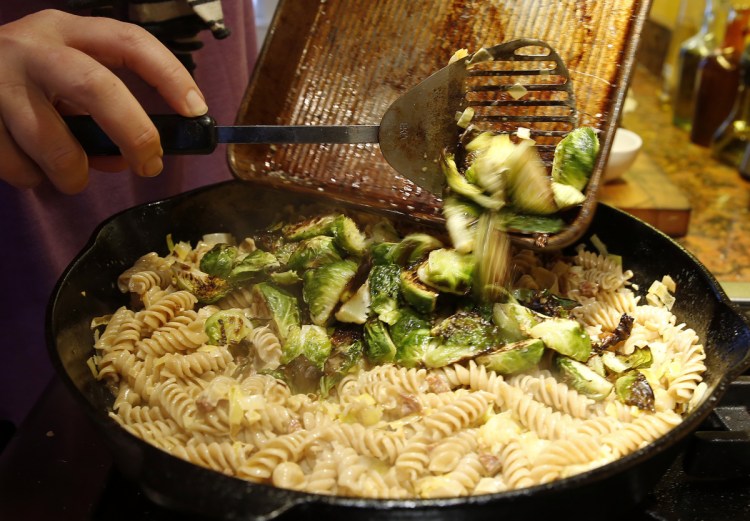Portion size matters. As most of us know from experience, it matters for your waistline because consuming more energy than you exert tips the bathroom scales in a direction you probably don’t like. But it also matters from a sustainability point of view because eating more food than your body needs wastes both food and the natural resources required to produce it.
This may not be the message you want to hear at the tail end of Thanksgiving weekend, seeing as the average American consumes 4,500 calories on Turkey Day alone, according to the Calorie Control Council, the marketing board for the diet food industry. That same group says that the average American eats 3,600 calories on an ordinary day. Since the USDA says that an average active human needs only 2,700 calories a day, we are, on average, over-eating by 900 calories per day.
According to Sustainable America, a nonprofit organization that looks to make the nation’s food and fuel systems more efficient, in the United States it takes roughly 10 units of fossil fuel energy to produce one unit of food energy. So if you are eating 900 food energy units more than your body requires to function, you are also consuming 9,000 more fossil fuel energy units than you ought to be.
The GRACE Communications Foundation, a nonprofit organization dedicated to creating a more sustainable food system, created a water footprint calculator to help illustrate how everyday actions – from washing dishes to watering the lawn to buying groceries – affect water use. Users can calculate how their type of diet (vegan, vegetarian, and omnivore) affects water usage. According to their calculations, the food the average meat-eating American eats takes 1,395 gallons of water day to produce, the food for the average vegetarian 690 gallons/day and the food for the average vegan 638 gallons/day. If average Americans stuck to USDA calorie guidelines, we could collectively reduce water usage by as much as a third.
Yes, as any dieter knows a person looking to eat less could whittle away at his calorie count by vowing not to eat in between meals. But we also need to take a hard look at mealtime portion sizes. Even before studies showed how fast food meal portions have increased by 300 percent since 1950, there were anthropological studies that analyzed the size of the Last Supper as presented in 52 paintings created between 1000 and 1900. One of those studies indicates portion size has been increasing in a linear fashion for at least a millennium.
But some evidence also indicates that smaller portions could be normalized over time. A study led by Eric Robinson Institute of Psychology, Health, and Society at the University of Liverpool in England tested whether reducing a food portion size “renormalizes” perceptions of what constitutes a normal amount of that food to eat and results in people selecting and consuming smaller portions of that food in the future. The findings, published last April in the American Journal of Clinical Nutrition, suggest hope both for our waistlines and for a more sustainable food systems.
“Because consumer preferences appear to be driven by environmental influences, reducing food portion sizes may recalibrate perceptions of what constitutes a ‘normal’ amount of food to eat and, in doing so, decrease how much consumers choose to eat,” Robinson wrote.
While the USDA My Plate visual suggests that a meal contain specific weights and measures of all five basic food groups (vegetables, fruits, grains, protein, and dairy), author and sustainable eating advocate Michael Pollan offers portioning advice that doesn’t involve pulling out a kitchen scale: “Eat real food, not too much, mostly plants.”
CHRISTINE BURNS RUDALEVIGE is a food writer, recipe developer and tester and cooking teacher in Brunswick, and the author of “Green Plate Special,” a cookbook from Islandport based on these columns. She can be contacted at cburns1227@gmail.com.
Send questions/comments to the editors.




Success. Please wait for the page to reload. If the page does not reload within 5 seconds, please refresh the page.
Enter your email and password to access comments.
Hi, to comment on stories you must . This profile is in addition to your subscription and website login.
Already have a commenting profile? .
Invalid username/password.
Please check your email to confirm and complete your registration.
Only subscribers are eligible to post comments. Please subscribe or login first for digital access. Here’s why.
Use the form below to reset your password. When you've submitted your account email, we will send an email with a reset code.